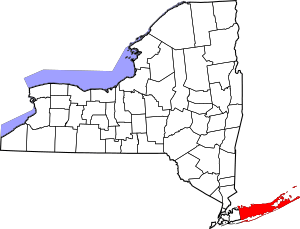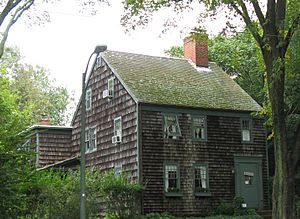National Register of Historic Places listings in Suffolk County, New York facts for kids
This page is a list of amazing places in Suffolk County, New York that are part of the National Register of Historic Places. Think of it like a special club for buildings, areas, and objects that are super important to American history and culture. These places are officially recognized by the United States government because they tell a unique story about our past.
| Albany (Albany) – Allegany – Bronx – Broome – Cattaraugus – Cayuga – Chautauqua – Chemung – Chenango – Clinton – Columbia – Cortland – Delaware – Dutchess (Poughkeepsie, Rhinebeck) – Erie (Buffalo) – Essex – Franklin – Fulton – Genesee – Greene – Hamilton – Herkimer – Jefferson – Kings – Lewis – Livingston – Madison – Monroe (Rochester) – Montgomery – Nassau – New York (Below 14th Street, 14th to 59th Streets, 59th to 110th Streets, Above 110th Street, Islands) – Niagara – Oneida – Onondaga (Syracuse) – Ontario – Orange – Orleans – Oswego – Otsego – Putnam – Queens – Rensselaer – Richmond – Rockland – St. Lawrence – Saratoga – Schenectady – Schoharie – Schuyler – Seneca – Steuben – Suffolk – Sullivan – Tioga – Tompkins – Ulster – Warren – Washington – Wayne – Westchester (Northern, Southern, New Rochelle, Peekskill, Yonkers) – Wyoming – Yates |
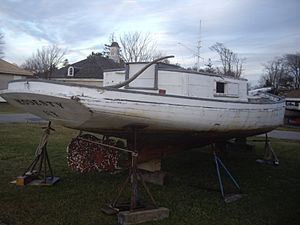
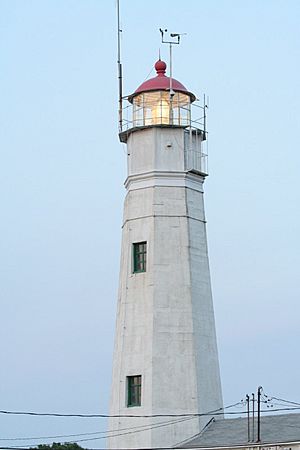
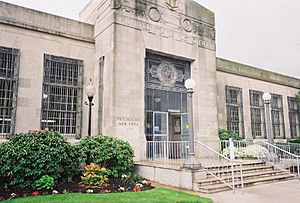
What is the National Register of Historic Places?
The National Register of Historic Places is America's official list of places that are important in history. It's like a hall of fame for buildings, structures, objects, sites, and districts that have special meaning. When a place is added to this list, it means it's recognized for its historical, architectural, archaeological, engineering, or cultural importance.
Why are places added to the Register?
Places are added to the Register for many reasons. Maybe a famous person lived there, or a big historical event happened there. Sometimes, a building is a great example of a certain type of architecture, or it shows how people lived a long time ago. Being on the Register helps protect these places and makes people more aware of their value.
How does it help these places?
Being on the National Register doesn't stop private owners from changing their property, but it does offer some benefits. For example, it can make it easier to get grants or tax breaks to help restore and maintain these historic sites. It also encourages communities to preserve their unique history for future generations.
Historic Places in Suffolk County Towns
Suffolk County is a large area with many towns, and each one has its own special history. Many of these towns have buildings and places that are listed on the National Register of Historic Places. This table shows how many historic spots are in each town across Suffolk County.
| Town Name | Number of Historic Places | |
|---|---|---|
| Eastern Towns | ||
| 1 | East Hampton | 29 |
| 2 | Riverhead | 12 |
| 3 | Shelter Island | 9 |
| 4 | Southampton | 35 |
| 5 | Southold | 24 |
| Western Towns | ||
| 6 | Babylon | 6 |
| 7 | Brookhaven | 47 |
| 8 | Huntington | 99 |
| 9 | Islip | 24 |
| 10 | Smithtown | 22 |
| Places listed more than once | (1) | |
| Total Historic Places | 306 |
Eastern Suffolk County Towns
The eastern part of Suffolk County is famous for its beautiful beaches and charming villages. Towns like East Hampton and Southampton have many historic homes and districts that show what life was like centuries ago. Southold and Shelter Island also have unique historic sites, often related to their maritime history and early settlements.
Western Suffolk County Towns
The western towns of Suffolk County, like Huntington and Brookhaven, are generally more populated. Huntington, for example, has the highest number of historic places on this list, with 99! This shows how rich its history is, with many old homes, churches, and public buildings still standing. Brookhaven and Islip also have a good number of historic sites, reflecting their growth and development over time.


